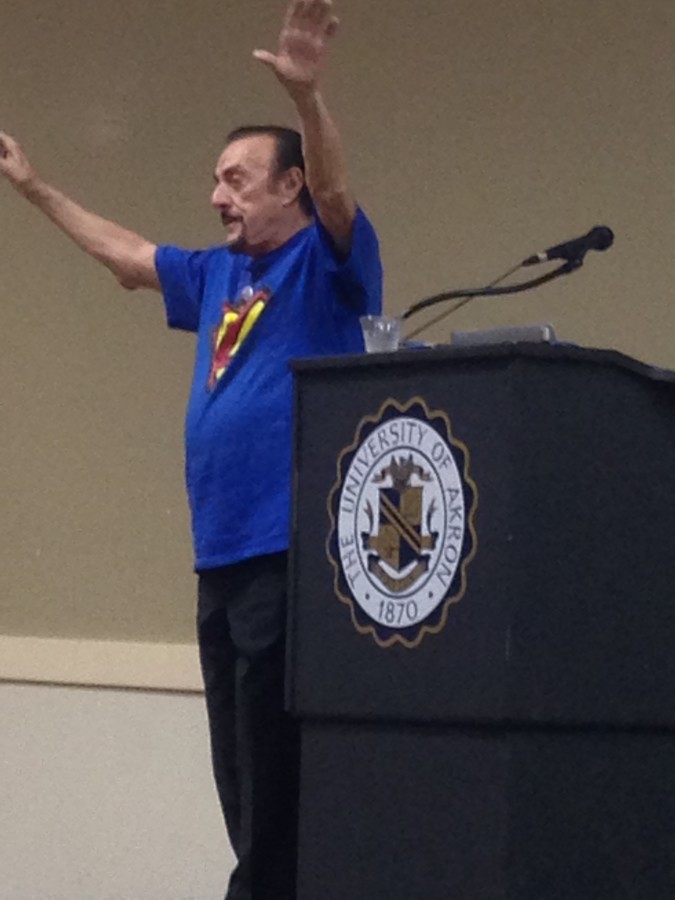World Famous Psychologist Visits UA
Dr. Zimbado addresses 1100 audience members at Quaker Station Monday night.
October 7, 2015
Those who have taken a psychology course have probably heard the name Philip Zimbardo at one time or another. On Monday, Oct. 5, he came to The University of Akron.
Zimbardo is most famously known for his ethically-controversial social experiment conducted in 1971, known as the Stanford Prison Experiment.
For the study, Zimbardo asked several college students to act as prisoners and guards in a mock prison environment, demonstrating a thin line between good and evil. The experiment got out of hand after just a few days and had to be stopped, but it remains today as one of the most referenced and recognizable studies in modern social psychology.
The event was sponsored by UA’s Cummings Center for the History of Psychology.
The Cummings Center for the History of Psychology serves as a research facility and museum for many historical artifacts from early psychological studies and research. Included in the museum are many items from Zimbardo’s own Stanford Prison Experiment.
Zimbardo conducts a great deal of research on heroism and evil, which was the main theme of the lecture he gave to 1,100 students, faculty, and community members at UA’s Quaker Station on Monday.
Zimbardo’s main question in his current research is “What makes good people go wrong?”
Zimbardo’s new book, The Lucifer Effect, addresses this question extensively and explores the many individual, situational, and systemic factors that can contribute to a person’s transformation from hero to villain.
Zimbardo delivered his lecture with humor, anecdotes and even dancing. At one point Zimbardo played a famous Diana Ross song and encouraged the audience to hold hands and sing along.
Audience members came from all different disciplines and universities. A large group of students from Tiffin University attended the lecture, including Kim Grogg, an undergraduate forensic psychology major, and her friend, Madison Whitehead, a sports management major.
Grogg said that she wanted to attend the Zimbardo lecture because “it’s really relevant to our forensic psychology program.”
“I took psychology in high school and knew about him and thought it would be interesting to come to,” Whitehead said.
Many members of the audience stayed after the lecture was over to meet Zimbardo, get their books signed, and even take a selfie with the man of the hour, who happily obliged.
Zimbardo grew up in the South Bronx of New York in the 30’s and 40’s, and went on to receive his Ph.D. in psychology from Yale University. He has been teaching psychology for over 50 years at prestigious institutions like NYU, Columbia, and Stanford, where he is currently Professor Emeritus.
Zimbardo has also served as President of the American Psychological Association, and continues to teach around the world and make significant contributions to the field of psychology.
These days Zimbardo spends a lot of his time working on his nonprofit organization, The Heroic Imagination Project, which seeks to educate others on heroism and how people can act as agents of social change to transform the world.
For more information on Zimbardo or his nonprofit organization, The Heroic Imagination Project, visit www.zimbardo.org, or http://heroicimagination.org.
Those wishing to see items from Zimbardo’s prison experiment as well as many other pieces of history from the field of psychology can visit the Cummings Center for the History of Psychology on campus, located at 73 S. College St. The museum is open Monday through Friday 10am-4pm, and Saturday 12pm-4pm. Admission is free, but donations are accepted.












